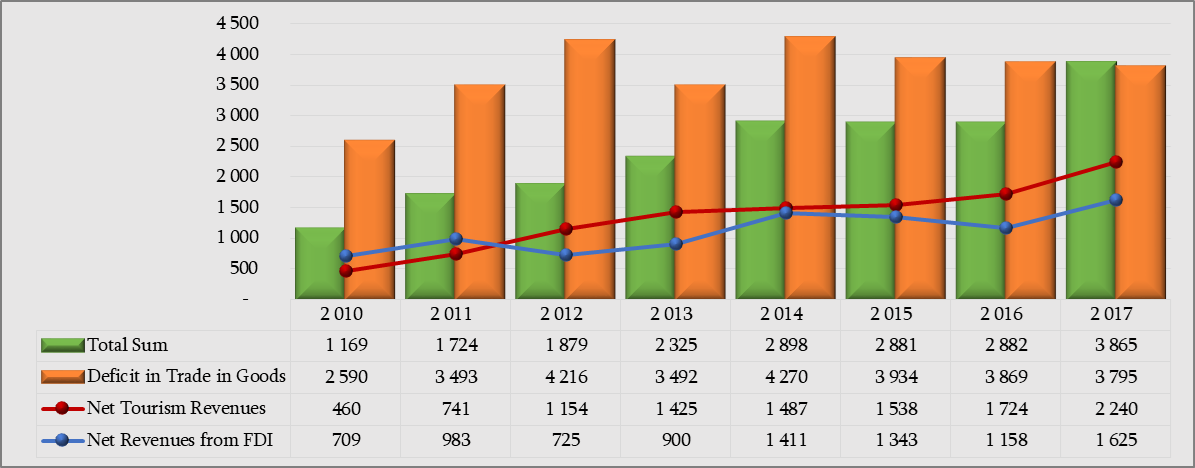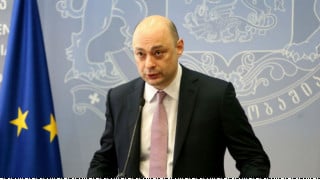Resume: A country’s balance of payments includes comprehensive data about money inflows and outflows. In the case of Georgia, the trade of goods component is negative; that is, the money outflow exceeds the money inflow (import exceeds export) which needs to be balanced.
The fact that the negative figure of trade of goods was balanced by tourism revenues together with foreign direct investments in 2017 is in line with the statement of the Minister of Economy and Sustainable Development and is an exceptional case in itself. In particular, the net revenues from tourism and investments were USD 2.2 and 1.6 billion, respectively, with a total sum of USD 3.8 billion which covers the USD 3.79 billion deficit from the trade of goods.
Analysis
The Minister of Economy and Sustainable Development of Georgia, Giorgi Kobulia, at a session of the Sector Economy and Economic Policy Committee of the Parliament of Georgia, stated: “2017 is the first year when part of the trade imbalance, which was not covered by tourism, was instead covered by direct investments. It is clear that we do not need to borrow money for that.”
A country’s balance of payments includes comprehensive data about money inflows and outflows. The balance of payments is a sort of account that reflects the money transfer between the economy of a specific country and the rest of the world. The balance consists of the current, capital and financial accounts.
A current account includes the component of trading with goods and services as well as incomes and transfers. The income component shows inflows of income from abroad (specifically, labour remuneration and investment income) and incomes transferred from abroad. Transfers include current transfers between the residents and non-residents of a country (for instance, grants and financial assistance). A capital account consists of purchase/assignations of capital transfers and non-produced non-financial assets. One of the forms of capital transfers is the forgiveness of debt. A financial account includes direct investments, portfolio investments, financial derivatives, other investments and reserve assets. If a country’s current account is deficit; that is, if more money leaves the country as compared to what comes in, the gap is covered by investments, taking debt and a decrease in monetary reserves.
Of note is that in the third quarter of 2018, the current account was in surplus. This happened for the first time in the history of independent Georgia. In regard to trade, Georgia’s trade in good has been historically running at a deficit; that is, imported goods exceed exported goods and this needs to be balanced from other sources of income.
Graph 1:Trade Deficit and Revenues from Tourism/Foreign Direct Investments (USD Million)

Source: National Bank of Georgia
As illustrated by Graph 1, 2017 is an exception because net revenues from tourism and investment do balance the trade deficit. In particular, net revenues from tourism and investment are USD 2.2 and 1.6 billion, respectively, whilst their total sum is USD 3.8 billion which covers the USD 3.79 billion deficit in the trade of goods.








